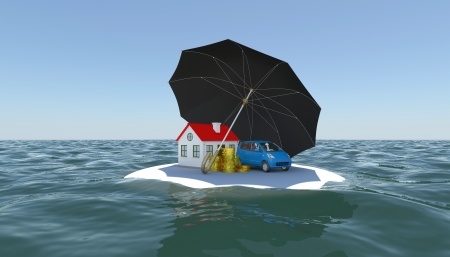Activity 10h: Why protection can be a self-defeating strategy

- Protection reduces the incentive for businesses to maximise efficiency because competitive pressure from imports is reduced and businesses know that tariffs and/or quotas minimise the competitive threats that would otherwise force them to more intently pursue efficiency gains in production.
- Protection is successful in protecting Australian jobs in the short term because the relative price of imported goods is artificially inflated, which leads to more sales and production for domestic firms. With greater production volumes than would otherwise occur (in the absence of protection), the demand for labour remains relatively high, which maintains employment in the protected industries. However, in the long run, firms can tend to become less and less efficient, particularly when protection levels are increased. These inefficiencies result in higher costs of production and higher prices which can work their way through the economy such that the economy’s cost structure increases, reducing the international competitiveness of a whole host of industries. This in turn negatively impacts on net exports, AD and real GDP, which reduces the demand for labour and employment over time.
- Free trade results in previously protected Australian industries exposed to the rigours of international competition, which results in only the most efficient Australian producers surviving in the global marketplace. Accordingly, the less efficient Australian producers will cease production and resources (including labour) will become idle before eventually being reallocated (in the main) to other Australian industries in which Australia is relatively efficient in the global market place (i.e. businesses that have a comparative advantage). This includes services industries such as education and tourism, agricultural industries, mining industries, etc.
- Tariffs can raise input costs for some businesses because some goods that have been protected by tariffs (e.g. motor vehicles) are used in the production process at other businesses. In addition, to the extent that protected industries will have greater buying power over resources (including labour), it will further raise the costs for other non-protected industries that are competing in factor markets for those same resources. To the extent that the exchange rate appreciates in the face of protection over time, this will further add to production costs for those firms relying on imported inputs. In addition, if governments raises business taxes to fund the provision of subsidies, this will potentially increase the costs for all businesses. [If taxes are not raised and the budget is allowed to move into further deficit, then this has the potential to increase the general structure of interest rates – further raising business costs.]
- As outlined in the previous, protection can not only ‘act like a tax on other producers’ by raising input costs indirectly, it also has the potential to raise actual taxes (and/or cause interest rates to rise) as the government will need to either raise government revenue to fund the provision of subsidies or raise funds in financial markets to finance a higher budget deficit (which increases pressure on interest rates).
- Higher protection levels are likely to lead to an exchange rate depreciation given that, over time, protection increases the cost of production, leading to higher rates of inflation which damages international competitiveness. This will therefore reduce the demand for net exports, which leads to a lower demand for Australian dollars and higher supply of Australian dollars on foreign currency markets.
- It can be difficult to remove protection overtime because businesses become overly reliant on protection and they devote more and more energy and resources into lobbying the government to maintain protection levels. In the case of very large businesses employing many workers, the threat of substantial job losses becomes a powerful disincentive for the government to remove protection levels.
